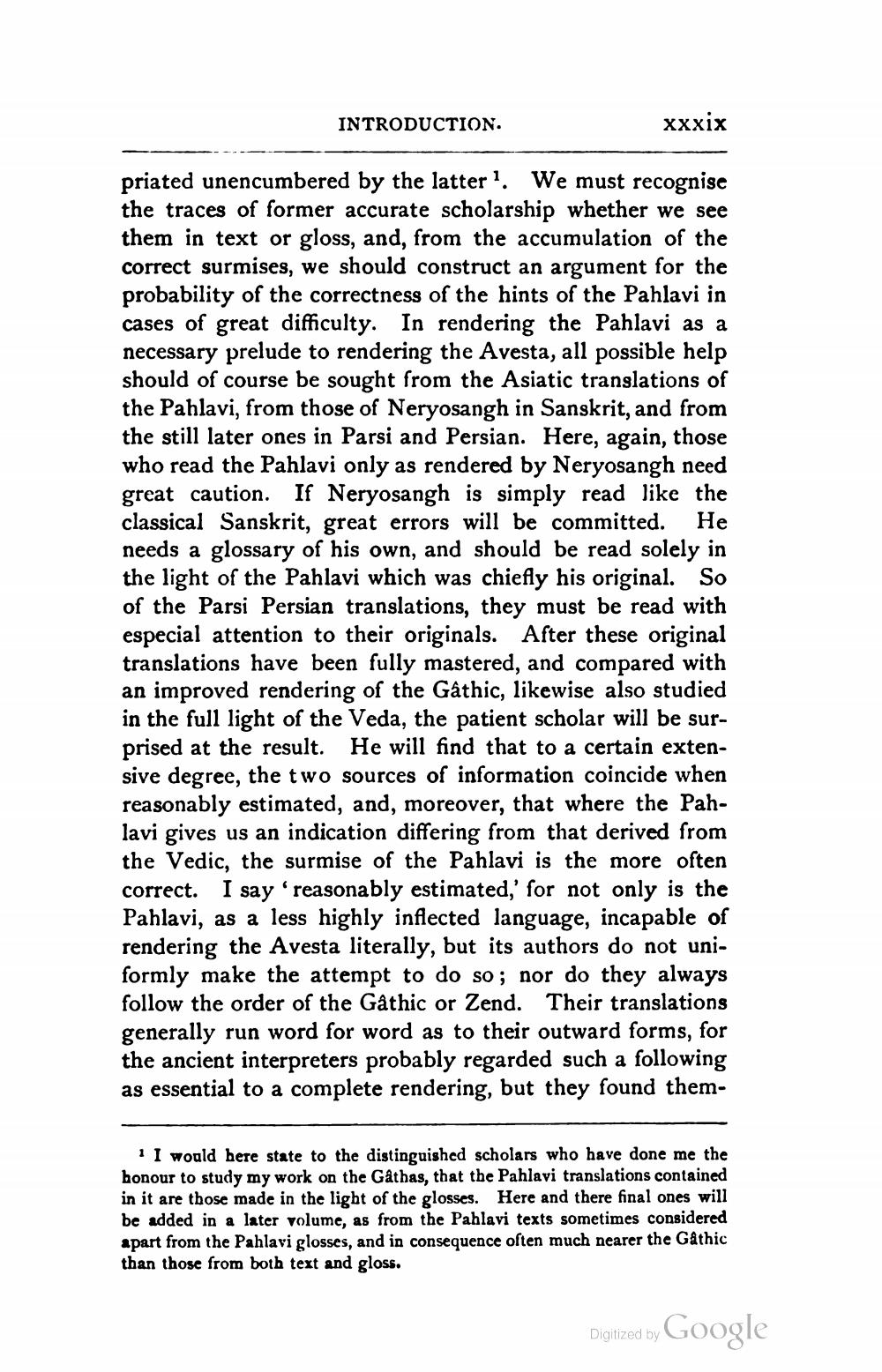________________
INTRODUCTION.
xxxix
priated unencumbered by the latter 1. We must recognise the traces of former accurate scholarship whether we see them in text or gloss, and, from the accumulation of the correct surmises, we should construct an argument for the probability of the correctness of the hints of the Pahlavi in cases of great difficulty. In rendering the Pahlavi as a necessary prelude to rendering the Avesta, all possible help should of course be sought from the Asiatic translations of the Pahlavi, from those of Neryosangh in Sanskrit, and from the still later ones in Parsi and Persian. Here, again, those who read the Pahlavi only as rendered by Neryosangh need great caution. If Neryosangh is simply read like the classical Sanskrit, great errors will be committed. He needs a glossary of his own, and should be read solely in the light of the Pahlavi which was chiefly his original. So of the Parsi Persian translations, they must be read with especial attention to their originals. After these original translations have been fully mastered, and compared with an improved rendering of the Gathic, likewise also studied in the full light of the Veda, the patient scholar will be surprised at the result. He will find that to a certain extensive degree, the two sources of information coincide when reasonably estimated, and, moreover, that where the Pahlavi gives us an indication differing from that derived from the Vedic, the surmise of the Pahlavi is the more often correct. I say 'reasonably estimated,' for not only is the Pahlavi, as a less highly inflected language, incapable of rendering the Avesta literally, but its authors do not uniformly make the attempt to do so; nor do they always follow the order of the Gathic or Zend. Their translations generally run word for word as to their outward forms, for the ancient interpreters probably regarded such a following as essential to a complete rendering, but they found them
1 I would here state to the distinguished scholars who have done me the honour to study my work on the Gathas, that the Pahlavi translations contained in it are those made in the light of the glosses. Here and there final ones will be added in a later volume, as from the Pahlavi texts sometimes considered apart from the Pahlavi glosses, and in consequence often much nearer the Gathic than those from both text and gloss.
Digitized by
Digitized by Google




